Last Updated on January 12, 2022
Owned and driven an automobile for a few years? If so, you have likely faced the torment of a bad battery.
Your car’s battery is implicated in getting you off to a good drive to work, to the store or just for a ride in the country. When that battery fails or even begins to weaken, pleasurable trips may not get out of your driveway.
Note: In this article we will be discussing batteries for conventional gasoline and diesel fueled cars, trucks and SUVs. Batteries for electric and hybrid vehicles are covered in this article.
Car Battery Basics
Let’s begin by discussing the two different types of automobile batteries available today. These types are the lead-acid battery and the absorbed glass mat (AGM) battery.
Lead-Acid Battery
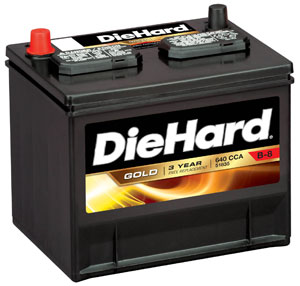 Lead-acid batteries have been around since the 1800s. This aged technology is still working fine for us.
Lead-acid batteries have been around since the 1800s. This aged technology is still working fine for us.
Lead acid batteries have six individual cells each with a free volume of an acidic electrolyte liquid. Each cell produces slightly above 2.1 volts of electricity. Thus a car battery will test at 12.6 volts when fully charged. This type of battery can leak the electrolyte if laid on its side or flipped over.
Related: How Much Does a Car Battery Weigh? (20 Examples)
AGM Battery
 AGM batteries were developed several decades back and were initially used for military purposes. These batteries also have six cells, but the electrolyte is soaked into fiberglass mats such that the fluid will not spill or leak if the battery is inverted.
AGM batteries were developed several decades back and were initially used for military purposes. These batteries also have six cells, but the electrolyte is soaked into fiberglass mats such that the fluid will not spill or leak if the battery is inverted.
For consumers, use of AGM batteries came first to motorcycles and more recently to pleasure boats and automobiles.
Alternator Role
No discussion of automobile batteries would be complete without covering the purpose of your car’s electricity generator, the alternator.
The alternator provides electrical power (direct current or DC) to charge the battery when your engine is running. It also provides the necessary power to run engine control systems and all the electrical accessories in your car.
Average Car Battery Life
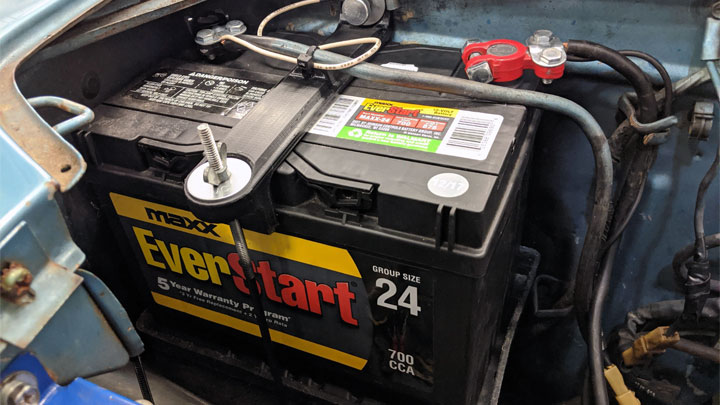
There was a time when a newly purchased car would include the manufacturer’s best quality battery. Life expectancies could be as long as five years. How many miles might we expect? Possibly as many as 60,000. But not with most new cars today.
To reduce the first cost of car ownership, most manufacturers have moved to supplying a run of the mill battery in each vehicle made. It may have the manufacturer’s label or name on the side. But be confident, it is very likely the same or similar to one that would be installed at your favorite repair shop.
In general, replacement lead-acid batteries will have a lifespan of two to as long as four or five years.
This is where AGM batteries shine. These types have proven to be more durable. AGM batteries can last up to ten years.
The warranty on a lead-acid battery in years will fairly accurately forecast when it will let you down. AGM type batteries sold today generally do not have warranties that match the life expectations forecast by the various manufacturers.
When you buy a new battery, place the receipt in the glovebox. It is your proof-of-purchase and provides the baseline date for any warranty benefit you might be entitled to.
What Affects a Car Battery Lifespan?

Driving habits and where you live can both affect battery lifespan. Things like your home location and work location, for example, may necessitate a daily use pattern that sometimes cannot be easily changed.
How might actual driving patterns either shorten or extend battery life? Consider these:
#1 – Short Daily Trips (less than 20 minutes)
Such trips reduce battery life. They limit alternator operation such that it may not fully recharge the battery. Beyond just the battery, your automobile’s entire mechanical and electrical systems plus tires will wear out more rapidly with this kind of driving.
#2 – Frequent Stops (with engine running)
Trips that pick up and/or drop off passengers fit this description. Think of the habits of a taxicab driver. Starts and stops, engine running with lights, air conditioning and sound system on. This puts a drain on the battery that may not get replaced during the next segment of the trip.
If possible, plan these short trips to regularly include a 5 to 10 mile run down a freeway. This can benefit the battery by giving it a healthy charge while fully warming up the engine and drivetrain.
#3 – Longer Trips
Battery life is enhanced by regularly taking longer drives at moderate to highway speeds. Such trips will allow the battery to fully charge. Longer drives also help remove water-based contaminants from the engine’s lubrication system benefitting engine life.
#4 – Where You Live
Do you live in a neighborhood or region where you must frequently drive on rough or unpaved roads? Mountains and farm country comes to mind.
The locale’s rough roads will subject a battery to sharp impacts. These impacts could damage the battery such that electrical continuity is interrupted. If this happens the battery will instantly fail.
Should your battery fail due to rough road driving, you can replace it with an AGM battery. These are more durable and will last longer in rough road conditions. Keep in mind also that AGM batteries are more than lead-acid types.
Rough road driving can also loosen the battery hold down clamps. Sometimes a loose hold down clamp will simply fall off. A loose battery is far more prone to physical damage during any driving conditions.
Periodically you should open the hood and confirm that the clamps are in place and the battery is held firmly. Hands wrapped in paper towels, grab the battery and give it a shake. Take corrective action if the battery is loose.
See Also: Symptoms of a Bad Ground Strap
#5 – Extended Periods of Non-Use
Occasionally your car may sit in the garage unused for one or two months. While the car is parked, guess what? Its onboard computer systems will still be busy at low power but draining the battery nonetheless.
If it is winter with below freezing temperatures, this battery drain will occur more quickly. Two months of this and a restart might not be possible. In addition, the dead battery may refuse to receive a charge and would have to be replaced.
In winter, a dead battery also may freeze and crack the case. This will leak acidic electrolyte onto the metal structure below with a risk of corrosion damage.
Such storage should be accompanied by the use of a good quality low amperage charger (sometimes called a battery maintainer) on the battery. The DieHard 71219 and NOCO Genius 2 are two excellent, inexpensive options.
How Old is My Battery?
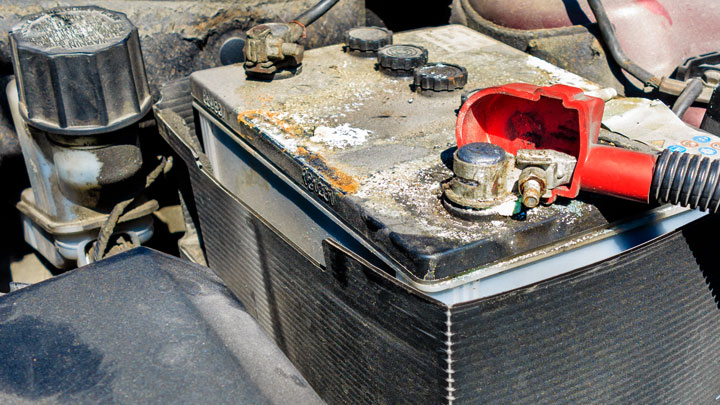
So glad you asked. Since age is related to your battery giving up the ghost, knowing when your battery was manufactured can be helpful. A date gets impression-stamped on every battery at the factory when it is shipped.
This is usually referred to as the date sticker on the battery. Most batteries are date marked as follows:
- The simple and obvious date format (MM/DD/YY) or (MM/YY). Usually stamped on the top of the battery. Example: 05/20 would be May 2020.
- The date code. Stamped on the top of the battery. A four or five digit alpha-numeric code with the date in the first two characters as follows:
- First character: one letter which is the month. For example: A = January, B = February, etc.
- Second character: one digit which is the year within the most recent decade. For example: 8 = 2018, 9 = 2019, etc. C7XXX would be March 2017.
Battery Warranty Start Date

Note that the manufacture date on the car battery is different than the warranty start date. When someone refers to the date sticker on the battery, they are referring to a label which indicates the purchase date of the battery.
Usually a circle for the year and date is punched out when you purchase the battery so you can quickly tell when the warranty took effect (along with the purchase receipt).
Most often, a car battery manufacturer offers a free replacement if the battery fails within a set period of time within the warranty period. For instance, a battery claiming a 48-month warranty may offer a free replacement if the battery fails within the first 24 months.
If it fails after 24 but before 48 months, you will usually get a prorated credit towards the purchase of a replacement battery depending on how far you are from the warranty end. It’s similar with 60-month, 72-month, or 84-month batteries but the replacement and prorated period will likely differ.
Does My Battery Need Replacing?
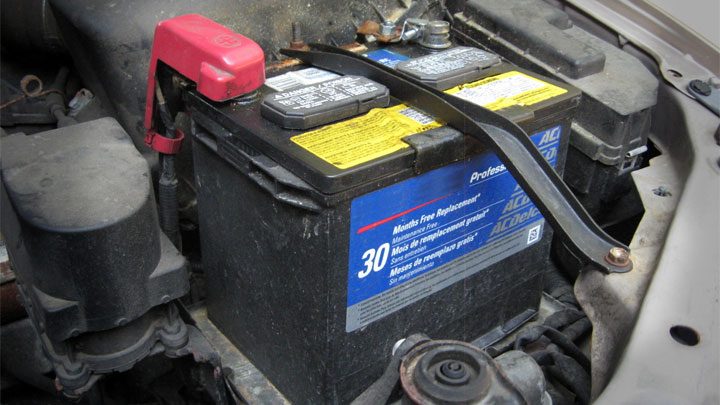
Because this information exists in another article (5 Symptoms of a Bad Car Battery), let’s be brief here. Your car battery may need servicing or replacement if you observe these symptoms:
- You see the battery warning light steadily lit in your instrument panel.
- The engine becomes difficult or impossible to start.
- A slight ‘rotten egg’ (hydrogen sulfide gas) smell is evident when you open the hood.
- You notice headlight intensity dimming while driving at night. Other accessories like the windshield wipers run slowly.
- The battery case becomes bloated.
Most of the above problems (Items 1 thru 4) may be related to poor charging performance by the alternator. This should be evaluated and a faulty alternator ruled out before you spend money on a new battery.
Also you can get your battery condition checked out at no cost with a load test at most quality auto parts stores such as Autozone, Napa, O’Reilly, and others. This can assure you that some useful battery life remains or tell you that trouble may be right around the corner. A load test is well advised if your battery has survived beyond its warranty period.
Following any hands-on attention you might give your car’s battery, you should thoroughly wash your hands. This will remove any traces of the acidic electrolyte that can be present on an older battery. Irritation and/or actual acid burns can result if you don’t clean your hands completely.
Read Also: Bad Alternator vs Bad Battery
Can I Just have the Battery Recharged?
Very possibly. If your battery suddenly goes dead and you cannot start your car, the battery may not necessarily need to be replaced. Several factors should guide your decision to recharge the battery.
First, answer the question, why did my battery go dead? For example, a failed alternator, loose alternator drive belt, or corroded battery terminals or cables, each of these faults could cause a battery to gradually discharge. With issues like these, your battery is not the problem and need not be replaced.
Related: 7 Reasons Your Car Battery is Dead
If you just recharge the battery without identifying and correcting the cause of the discharge, the battery will simply go dead again.
Second, how old is the battery? Is it older than its warranty period? If so, you will be better off replacing it. In many cases, the battery may need replacing prior to the end of the warranty period.
In these cases, bring your battery back to the original place of purchase and they will usually give you a prorated credit towards the purchase of a new battery (depending on how much time was left on the warranty). This is similar to how warranties work with new car tires.
Can a Dead Battery be Recharged by Your Alternator After a Jump Start?
Not necessarily. Here’s why. If the battery is simply weak, a recharge from the alternator is fine. But if the battery is completely dead, this can materially shorten an alternator’s service life.
With the engine running, the alternator has the ability to charge a moderately discharged battery while at the same time providing power to engine control systems and accessories.
However it is not designed to bear the high current drain needed to recharge a dead battery and power everything else as well. A totally dead battery should only be recharged using a quality battery charger such as the Schumacher SC1280 or TowerTop.
How to Test Whether a Battery Charger is Needed
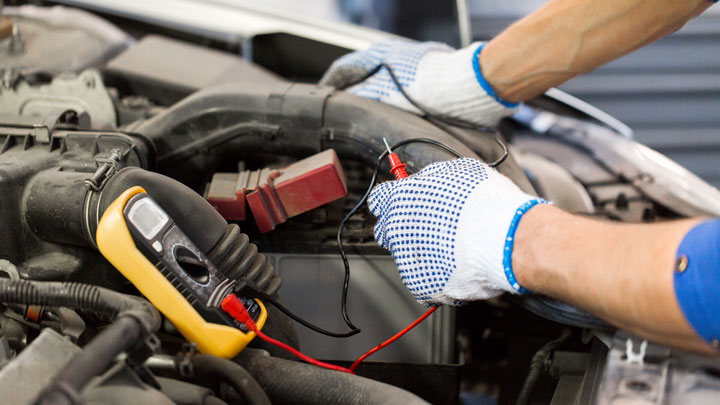
You can determine if your battery is rechargeable with your car’s alternator using this simple test. Prior to jump starting the engine and with the ignition turned off, use a DC multimeter such as this one or from a local auto parts store to check the voltage across the battery terminals.
- If the voltage you read is 12 volts or above you can safely recharge the battery with your alternator.
- If the voltage is below 12 volts, a conventional battery charger will be required.
Situation conditions may guide your decision on this as well. For example, if you are stuck in the barren wilderness and can’t start your car, getting a jump to restart it and then driving to a repair facility may be the only option.
In that case the inevitable recharge by alternator that will happen may be your only choice.

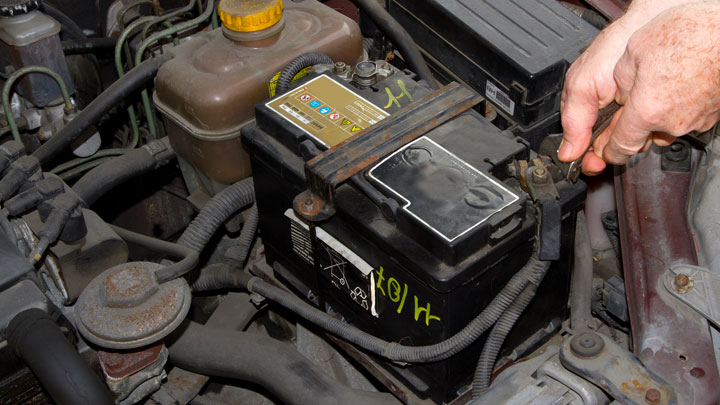
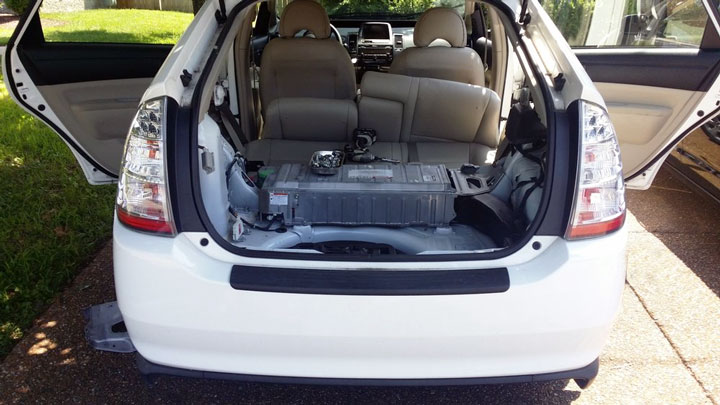


My battery is free maintainance N65MF it was drawned to 4V and now the vehicle (toyota landcruiser)cant start but when started it will work as usual with no electrical component working